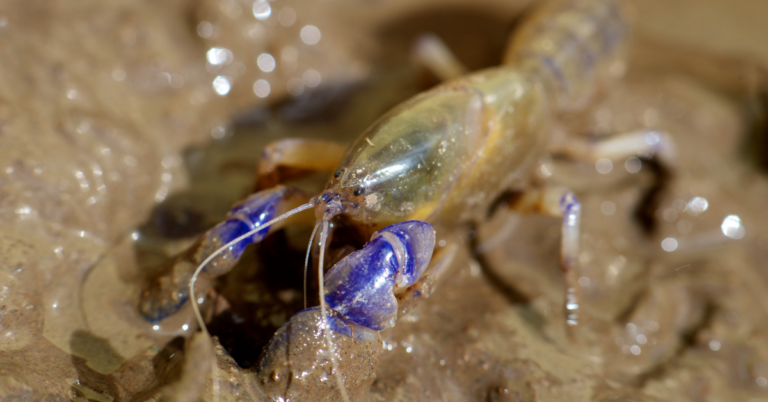We’ve launched a new project designed to address the impacts of climate change on two critically-endangered species and secure their future.
White-bellied frog
The white-bellied frog (Anstisia alba) is a critically endangered frog species with a very limited distribution in the lower South West corner of Western Australia. In fact, the combined area of habitat it occupies is less than 2km2!
The white-bellied frog grows to 25 mm – no bigger than an adult thumbnail – and as its name suggests, has a distinguishing white belly.
Western swamp tortoise
Once feared extinct for over 100 years, the western swamp tortoise (Pseudemydura umbrina) is a critically endangered reptile species, now restricted to just two small remnant populations within nature reserves managed by the Department of Biodiversity, Conservation and Attractions.
The western swamp tortoise is small compared to similar species, with a short neck and shell length up to 15cm – weighing about 500g.

Photo courtesy Perth Zoo.

Photo by John Lawson.
The problem
According to ‘Australia: State of the Environment Report 2021‘ Australia continues to have one of the highest rate of species decline among countries in the Organisation for Economic Co-operation and Development (OECD).
Over 100 Australian species are listed as ‘Extinct’ or ‘Extinct in the Wild’ under Australian national, state or territory legislation. Our biodiversity continues to be in decline with ramifications for human health, wellbeing and economic prosperity.
Both species have been impacted by drying conditions associated with climate change, with the South West NRM region having been identified by the Intergovernmental Panel on Climate Change as a global drying hotspot.
Both have been listed among 110 species flagged for priority attention in the Australian Government’s Threatened Species Action Plan 2022-2032: Towards Zero Extinctions.
What we’re doing about it
The South West NRM region forms a significant part of an internationally recognised ‘Global Biodiversity Hotspot’. These are identified as the most biologically rich yet most threatened places on earth. There are 36 of these hotspots around the world, with just two located in Australia.
According to Conservation International, success in conserving species in these hotspots can have enormous impact on securing our global biodiversity.
With all of this in mind, South West NRM developed its “Addressing the threat of climate change for endangered amphibians and reptiles in the SW NRM” project.
With funding support received from the Australian Government’s Natural Heritage Trust, work on the five-year project commenced in 2025.
Western swamp tortoises
Western swamp tortoises previously translocated to the South West by the Department of Biodiversity, Conservation & Attractions will be monitored over the 2025 spring period, to assess health of population. If deemed successful, another translocation will be planned.
A trial into egg clutch translocation will also be assessed to determine if this may be a viable option for future translocations. First Nations people will be engaged in the project to assist with monitoring and other activities. The project will also see a new monitoring methodology developed for the western swamp tortoise.
White-bellied frogs
The threat of climate change for the critically endangered white-bellied frog (Anstisia alba) will be addressed through a translocation of juvenile frogs from the Perth Zoo Native Breeding Facility into identified, suitable translocation site/s.
Significant wild populations will be granted greater protection in a drying climate through the reinstatement of fire breaks and implementation of cable fencing to restrict human access to protect the species.
First Nations people will be engaged in the project to assist with monitoring and other activities.



Western swamp tortoise baby. Photo credit Perth Zoo.
White-bellied Frog
Western swamp tortoise. Photo credit Perth Zoo.
Project Partners
This project is funded by the Australian Government’s Natural Heritage Trust and delivered by South West NRM, a member of the Commonwealth Regional Delivery Partners panel.









